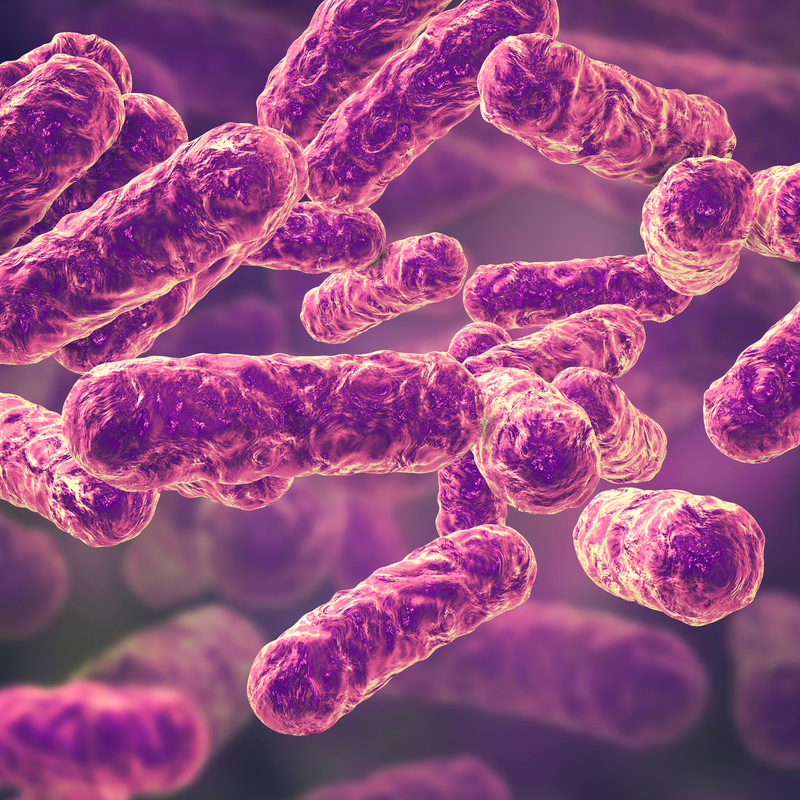
What is the Bartonella quintana pathogen?
The Bartonella quintana pathogen comes from the Bartonella genus and is a gram-negative bacterium. The bacterium is considered to be the causative agent of trench fever and is distributed worldwide. Humans, but more rarely also dogs, are considered to be the bacterium's pathogen reservoir. The Bartonella quintana pathogen is transmitted by the clothes louse (Pediculus humanus corporis) as well as via lice faeces from human to human. Humans, but less frequently also dogs, are the pathogen reservoir of B. quintana.
What are the characteristics of the Bartonella quintana pathogen?
The Bartonella quintana pathogen is a rod-shaped, microaerophilic bacterium that genetically appears on the surface of adhesion molecules, the so-called vomp. Its genome contains about 1,700 genes and consists of 1.58 million base pairs. With regard to its growth conditions, B. quintana is rather a demanding microorganism. The pathogen achieves optimal growth conditions in an atmosphere rich in carbon dioxide and in a nutrient medium enriched with blood. It is sensitive to high and low temperatures and disinfectants.
How is the Bartonella quintana pathogen transmitted?
The bacterium is transmitted to humans by the faeces of infected fleas getting into abraded skin areas or the conjunctiva . Infection with Bartonella quintana often causes trench fever, which is now endemic in Mexico, Eritrea, Tunisia, Poland and the countries of the former Soviet Union. But there are also cases of trench fever in the United States, especially among the homeless population.
Which groups are particularly at risk?
The first Bartonella quintana infection was documented during the First World War. At that time, more than one million soldiers in Europe had contracted trench fever. In the meantime, the bacterium is known all over the world. The following groups of people are particularly at risk of becoming infected with the pathogen :
- People with a low social status,
- People suffering from alcohol addiction,
- People who are homeless
Decisive
for infection with the virus are unhygienic conditions, but also
the cohabitation of many people in a confined space, as this facilitates the
transmission with infected lice.
What is the course of a Bartonella quintana infection?
The Bartonella quintana pathogen quickly disappears from the bloodstream after the primary infection , but then attacks the innermost cell layer of the blood vessels (endothelial cells) and the red blood cells (erythrocytes) after a few days. The multiplication of the pathogen in the cells causes nuclear atypia. This is the occurrence of cell nuclei with unusual shapes, sizes and structures. Nuclear atypia prevents apoptosis, i.e. the controlled death of cells through the signalling pathways. In the case of a Bartonella quintana infection , pro-inflammatory cytokines are released in this way and simultaneously stimulate the growth of the vessels.
What are the symptoms of a Bartonella quintana infection?
The Bartonella quintana pathogens mainly cause trench fever in humans. This causes the following symptoms:
- Fever attacks lasting between 3 and 5 days,
- Chills,
- Muscle aches,
- Joint pain (arthralgia),
- Headaches,
- general feeling of weakness and drowsiness,
In the case of
trench fever, the incubation period is up to five weeks.
The disease heals after one to two months, but often recurs
up to ten years after the first illness.
What infections can the Bartonella quintana pathogen cause?
In addition to the development of trench fever, the Bartonella quintana pathogen can cause bacillary angiomatosis, especially in immunosuppressed people. This is an infectious vascular disease. In addition, B. quintana can cause chronic bacteraemia , which in turn is often responsible for culture-negative endocraditis.
How is the Bartonella quintana pathogen diagnosed?
The Bartonella quintana pathogen is detected either serologically, i.e. by an immunofluorescence, or by a PCR test. In addition, it is in principle possible to create a culture of the pathogen using blood or cell cultures. However, this procedure is very time-consuming and expensive. If bacteraemia is present, it can be diagnosed by a blood smear.
How is the Bartonella quintana pathogen treated?
Infections, such as trench fever or bacteraemia caused by the Bartonella quintana pathogen are always treated with antibiotics. Here, the therapies may differ as follows :
- for trench fever and/or chronic bacteraemia: doxycycline combined with gentamicin,
- for endocarditis: doxycycline combined with gentamicin,
- for bacillary angiomatosis: erythromycin or doxycycline; alternatively ceftriaxone and fluoroquinolones may also be considered
Important
is that the therapy is taken over a period of several weeks to
months. Treatment with antibiotics is also
so important to prevent the development of endocarditis.
How can an infection with Bartonella quintana be prevented?
To prevent a Bartonella quintana infection, you should:
- avoid contact with human body lice. Contact with lice occurs mainly in crowded living conditions, but also through limited access to hygienic facilities.
- do not share clothes, bed linen and/or towels with people who may have body lice.
- Clothing or bedding that may be infested with body lice should be washed at above 55 ° degrees and dried at high heat. In this way, the lice and possible eggs can be killed.
